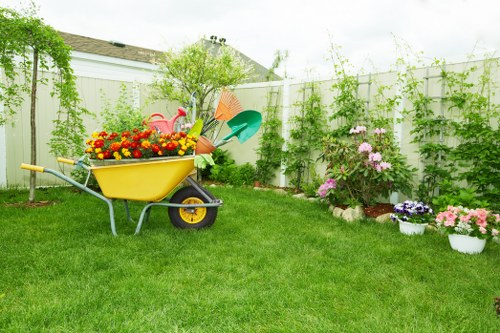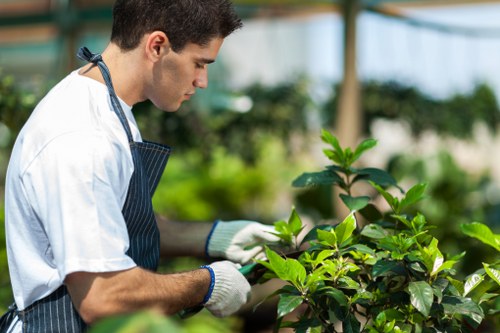Gardener Poplar: Cultivating Success with Poplar Trees
Introduction to Poplar Trees

Poplar trees are renowned for their rapid growth and versatility, making them a favorite among gardeners and landscapers alike. These trees belong to the genus Populus and are native to various regions across the Northern Hemisphere.
Their towering stature and lush foliage provide both aesthetic appeal and practical benefits, such as offering shade and acting as windbreaks. Poplar trees are often chosen for large gardens, parks, and along streets due to their impressive presence.
Understanding the specific needs and characteristics of poplar trees is essential for successful cultivation. This guide aims to provide comprehensive insights into planting, maintaining, and maximizing the benefits of poplar trees in your garden.
Benefits of Poplar Trees in Gardens

One of the primary advantages of poplar trees is their fast growth rate. They can reach heights of up to 50 feet in just a few years, providing quick coverage and shade for your garden.
Poplar trees also offer excellent aesthetic value. Their vibrant green leaves in summer transition to beautiful hues of yellow and orange in the fall, adding seasonal color to your landscape.
Additionally, poplars are effective in soil stabilization. Their extensive root systems help prevent soil erosion, making them ideal for areas prone to runoff or on slopes.
Choosing the Right Poplar Variety

There are several species of poplar trees, each with unique characteristics. Some popular varieties include:
- Lombardy Poplar: Known for its tall, columnar shape, making it suitable for narrow spaces.
- Weeping Poplar: Features graceful, drooping branches that add a soft, elegant look.
- Swamp Cottonwood: Thrives in wetter conditions and offers distinctive, fluffy seeds.
When selecting a poplar variety, consider factors such as climate compatibility, soil type, and the intended use within your garden. Consulting with a local nursery can provide additional guidance tailored to your specific region.
It's also important to account for the mature size of the tree to ensure it fits well within the available space without causing any future issues.
Planting Poplar Trees

Proper planting is crucial for the healthy growth of poplar trees. Follow these steps to ensure successful establishment:
- Choose the Right Location: Select a site with ample sunlight and well-drained soil. Poplars prefer full sun but can tolerate partial shade.
- Prepare the Soil: Loosen the soil and incorporate organic matter to improve fertility and drainage.
- Dig the Hole: The hole should be twice as wide and the same depth as the root ball of the tree.
- Planting: Place the tree in the hole, ensuring the root collar is level with the ground. Backfill with soil, gently tamping to eliminate air pockets.
- Watering: Water thoroughly after planting to help settle the soil and provide moisture to the roots.
Mulching around the base can help retain moisture and regulate soil temperature. Ensure the mulch does not touch the trunk to prevent rot and pest issues.
Regular watering during the first few growing seasons will establish a strong root system, contributing to the tree's long-term health and stability.
Maintenance Tips for Poplar Trees

Poplar trees require minimal maintenance, but certain practices can enhance their growth and longevity:
- Pruning: Regularly remove dead or crossing branches to maintain shape and improve airflow.
- Fertilizing: Apply a balanced fertilizer in early spring to support healthy growth.
- Pest Control: Keep an eye out for common pests such as aphids and caterpillars, treating infestations promptly.
- Watering: Ensure consistent moisture, especially during dry spells, to prevent stress and promote vigor.
Monitoring the tree for signs of disease or stress will allow for early intervention, ensuring the poplar remains a vibrant and healthy component of your garden.
Additionally, consider the impact of the tree on surrounding plants, as poplars can cast significant shade that may affect underplantings.
Common Issues and Solutions

While poplar trees are generally hardy, they can face several challenges:
Leaf Spot Diseases: Fungal infections can cause discoloration and defoliation. Treatment involves proper spacing for airflow and applying fungicides if necessary.
Root Problems: Poplars have extensive root systems that can interfere with sidewalks and foundations. Regular monitoring and strategic planting distances can mitigate these issues.
Insect Infestations: Pests like borers and beetles can damage the tree. Integrated pest management strategies, including biological controls, can help manage these threats.
Enhancing Your Garden with Poplar Trees

Integrating poplar trees into your garden design can create a harmonious and functional landscape:
- Creating Privacy: Planting a row of poplars can serve as a natural barrier, providing privacy from neighbors and reducing noise pollution.
- Windbreaks: Their tall, sturdy structure effectively blocks strong winds, protecting other plants and reducing energy costs in nearby buildings.
- Habitat for Wildlife: Poplars offer shelter and food for various birds and insects, promoting biodiversity in your garden.
Combining poplar trees with other complementary plantings can enhance the overall aesthetic and ecological value of your outdoor space.
Consider pairing them with flowering shrubs or ground covers to add layers of texture and color, creating a dynamic and inviting environment.
Local Relevance: Neighborhoods Close to Poplar

For gardeners in and around Poplar, several nearby areas offer unique features and resources:
- Blackwall: Known for its riverside gardens and community green spaces, Blackwall is ideal for gardeners seeking inspiration from natural water features.
- Bethnal Green: Offers a variety of nurseries and plant shops, providing access to a wide range of gardening supplies and expertise.
- Canning Town: Home to urban gardening projects and rooftop gardens, Canning Town encourages innovative planting solutions.
- Canary Wharf: Features public parks and landscaped areas where poplar trees thrive, serving as a model for successful urban greenery.
- Bow: With its extensive residential gardens, Bow is perfect for gardeners looking to exchange tips and showcase their poplar tree arrangements.
- Wapping: Offers picturesque waterfront gardens that highlight the beauty of poplar trees against the backdrop of the River Thames.
- Stratford: Hosts numerous gardening events and workshops, providing opportunities for learning and community engagement.
- Devons Road: Known for its botanical gardens, Devons Road is a haven for plant enthusiasts and poplar tree admirers.
- Isle of Dogs: Features extensive green spaces and tree-lined streets, perfect for observing the growth and maintenance of poplar trees.
- East India Docks: Combines historical charm with modern landscaping, showcasing how poplar trees can enhance both old and new environments.
- Mulberry Bush: A tranquil area with community gardens where poplar trees provide shade and structure to the planting schemes.
- Victoria Dock: Offers expansive parks where large poplar trees contribute to the scenic beauty and environmental health.
- Hackney: Celebrates diverse gardening styles, allowing poplar trees to complement a variety of landscape designs.
- Greenwich: Integrates poplar trees within its historic and contemporary gardens, demonstrating their adaptability and appeal.
- Rotherhithe: Combines industrial heritage with lush greenery, where poplar trees play a key role in urban landscaping.
These areas provide ample inspiration and support for gardeners looking to incorporate poplar trees into their own gardens, offering both practical resources and beautiful examples of successful cultivation.
Conclusion

Poplar trees are a valuable addition to any garden, offering rapid growth, aesthetic beauty, and practical benefits. By understanding their specific needs and addressing common challenges, gardeners can cultivate thriving poplar trees that enhance their outdoor spaces.
Whether you're planting in a large backyard or contributing to a community garden, poplar trees provide flexibility and resilience, making them a wise choice for both novice and experienced gardeners.
Embrace the elegance and strength of poplar trees, and watch as they transform your garden into a vibrant, dynamic landscape.
Frequently Asked Questions

1. How fast do poplar trees grow?
Poplar trees are known for their rapid growth rate, often reaching up to 5 feet per year under optimal conditions.
2. Are poplar trees suitable for small gardens?
While poplar trees can grow quite large, selecting a dwarf variety or ensuring adequate space can make them suitable for smaller gardens.
3. What soil type do poplar trees prefer?
Poplar trees thrive in well-drained, fertile soils but can adapt to a range of soil types, including sandy and clay soils.
4. Do poplar trees require a lot of maintenance?
Poplar trees require minimal maintenance, primarily involving regular watering during establishment, occasional pruning, and monitoring for pests.
5. Can poplar trees be used as windbreaks?
Yes, their tall and sturdy structure makes them excellent for serving as effective windbreaks in gardens and open spaces.